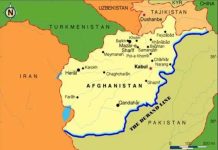By: Qamar Bashir
Despite the Pakistan government’s extensive efforts to manage the crisis involving students in Kyrgyzstan, social media platforms, particularly X (formerly Twitter), were rife with criticism regarding the perceived mishandling of the situation. Many users expressed frustration over the initial delay in government response and the lack of clear communication during the early stages of the crisis.
Concerns were being raised about the adequacy and timeliness of the measures taken to ensure the safety and well-being of the students. Criticism also focuses on the reported instances of students being left without food and shelter, highlighting a perceived disconnect between official statements and on-ground realities.
Parents and relatives used X (banned and slowdown in Pakistan) to voice their anxieties and dissatisfaction, questioning the government’s preparedness and ability to protect its citizens abroad.
Traditional media in Pakistan extensively covered the government’s handling of the crisis involving Pakistani students in Kyrgyzstan which was triggered by a viral video showing a brawl between local Kyrgyz and Egyptian students at a hostel. The altercation reportedly began over harassment issues and quickly escalated. The video, which spread widely on social media, incited locals to protest against what they perceived as lenient treatment of foreign students involved in the fight.
This led to widespread attacks on hostels housing international students, particularly those from India, Pakistan, and Bangladesh. The situation was further inflamed by false and unverified information circulating on social media, causing panic and unrest among the students and their families back home.
The media highlighted several key issues including delays in the government’s response and evacuation efforts, communication breakdowns leading to confusion among students and their families, reports of insufficient support from Pakistani diplomatic missions, concerns about the safety of students amidst political unrest, and difficulties in accessing medical care.
However, the Pakistani government’s response to the crisis involving Pakistani students in Kyrgyzstan serves as an excellent case study in effective public relations (PR) and crisis management. The government’s response started rolling after the Prime Minister fired a tweet showing his concern over attacks on Pakistan students by local mob in Bishkek on 17 May where according to Kyrgyz authorities 41 victims sought medical help.
The government, though a bit late starter, demonstrated its prioritization of the issue through rapid, high-level intervention. The Prime Minister, Deputy Prime Minister, Minister for Foreign Affairs, Minister of Interior, and Minister of Information immediately got involved. The Prime Minister also coordinated efforts on the ground by speaking directly with the Pakistani Ambassador in Kyrgyzstan.
Effective communication strategies played a crucial role in managing the crisis. Multiple press conferences were held to provide accurate information and updates, ensuring transparency and keeping the public informed. This approach helped manage panic and prevent misinformation. Additionally, updates and reassurances were shared on social media platforms and government websites, allowing the government to reach a wide audience quickly.
Deputy Prime Minister and Foreign Minister Senator Mohammad Ishaq Dar reached Bishkek, the capital of Kyrgyzstan. He met with Mr. Shahzaib, a Pakistani textile worker in hospital who was injured during the recent mob violence in Bishkek.
He met with Deputy Chairman of the Kyrgyz Cabinet of Ministers Edil Baisalov and Kyrgyz Minister for Health Alymkadyr Beishenaliev and took up the matter of the unfortunate incident and issues appurtenant to it. He also held a meeting with a group of Pakistani medical students at Bishkek Airport and assured them the commitment of the Government of Pakistan to the welfare of overseas Pakistanis. He also held a detailed meeting with Foreign Minister of the Kyrgyz Republic Kulubaev Zheenbek Moldokanovich in Bishkek, Kyrgyzstan and discussed the unfortunate incidents of violence against Pakistanis. He hoped that those responsible for the violence would be held accountable.
The Deputy Prime Minister also took note of the losses of the student in terms of education and financial losses of the parents and promised that a meeting of the stakeholders will soon be convened to look into the possibility of accommodating them in the Pakistani medical institutions.
The government also constituted an inquiry committee to establish what led to the mob attacks on its students and to look into the reasons, response readiness of Pakistani mission and the government. The committee would coordinate with the Kyrgyz authorities to review all the findings and developments in Bishkek and submit its report within two weeks.
Due to the government’s proactive initiative, around 4,036 Pakistani students were repatriated as of 22 May on several special evacuation flights in an operation that is ongoing even as Kyrgyz authorities have insisted the situation in Bishkek is now calm.
Whereas no such efforts were made by the governments of India and Bangladesh despite the evacuation demands of their students which stands at 28,800 in toto including from India (15,000) Pakistan (10,000) and 1200 from Bangladesh.
While the Pakistani government and its embassy in Bishkek undertook significant measures to address the crisis involving Pakistani students in Kyrgyzstan, there are areas where improvements could have been made. The embassy’s website is almost non-existent, with blank sections and, besides adorning a picture of the Ambassador, having no useful information at all. There are no press releases, video messages, or safety and security SOPs for the stranded students on the website.
There is no mention of any hotline established to register the concerns of the students. There is a total absence of organized and focused centrally controlled registration of pressing needs of the students and making arrangements to meet their essential requirements.
The embassy failed to set up a centralized support group of the Pakistani community in Kyrgyzstan, create a listing of available resources, or compile an inventory of contact numbers and addresses of community members to help students in distress. In Pakistan, there was no help desk for parents to seek answers to their queries, nor a centralized system to garner help from the community to mitigate the suffering of the students.
Proactive communication, an early warning system, enhanced coordination, and a swift evacuation process could have mitigated initial delays and confusion. Regular updates and virtual town hall meetings with parents could have reduced anxiety and built trust. Follow-up support for returning students would demonstrate a continued commitment to their well-being. By addressing these aspects, the government could have ensured a more robust and compassionate response.
By: Qamar Bashir
Former Press Secretary to the President
Former Press Minister to the Embassy of Pakistan to France
Former MD, SRBC

















